"Corner store at 11 p.m. Durham, North Carolina." Photo by Jack Delano, 1940. (Courtesy of Library of Congress - editing assistance from Ashley Coates)
While it is unclear if the same structure has remained in place dating that far back, Sanborn maps from 1913 show a commercial structure of similar dimensions at this spot on East Pettigrew - for many years alternately known as Railroad Ave. while East Durham was considered a separate settlement.
(Courtesy of Proquest Sanborn Maps, accessible online through Durham County Library and nclive.org)
Even as the usage of East Pettigrew to connote this further exstension of the road running along the south side of the tracks grew more consistent, more time would pass before regular street numbers extended beyond the 1300 block where it crossed Alston Avenue. The 1921 city directory, for example, lists a Harvey D. Hopkins grocer at "E Pettigrew near Coal Chute, East Durham" - a reference to one of several historical names for the street alongside this building. Coal Chute Alley clearly had some relation to the "Coal Platform" faintly labeled at the top of the above map, though the name Clyde Alley is substituted for the same unpaved road. Eventually this would come to be known as Sowell Alley and then Sowell Street, taking the name of a family that had long lived in the area.
Though markings on the 1913 Sanborn suggest this may already have been the case, directories first suggest the building was divided into two units (1502 and 1502 1/2) in 1926, when an African American tobacco worker named Rosa Mack was listed as residing in the side apartment. Using first an asterisk and then the annotation "(c)" to help Jim Crow-era Durhamites identify the race of those associated with its listings, the city directory specifies this as a black-owned grocery by 1930, when it was the store and apparent residence of an Arguster Petteway.
The turnover in names and ownership in subsequent years is remarkable, with Milton J. McNeill selling "soft drinks" in 1935, replaced by a "Wm Brewington (c), grocer" before 1939 - all identified as African American. If the ever-changing listings are to be believed, at the time of Frank Delano's late-night stopover in 1940, Pearl Tyson was running the shop, while residing just a few doors down at 1510 East Pettigrew.
"Corner store at 11 p.m. Durham, North Carolina." Photo by Jack Delano, 1940. (Courtesy of Library of Congress - editing assistance from Ashley Coates)
A lower resolution version of this photo foundered in Open Durham's Mystery Photo series for the better part of a decade, but thanks to upgrades in the Library of Congress digital collection and some research in early 2019, this location was finally established.
1502 East Pettigrew is the address given for Catlett's Restaurant in Victor H. Green's The Negro Motorist Green Book guide for African American travelers in the 1947-1949 editions. These were annually published aides for navigating Jim Crow America while on business trips and vacations. Within its pages, readers could find entries – listed by state and city – for restaurants, lodging, gas stations, beauty parlors and barber shops, and other service providers, such as tailors, who would gladly take their business in an otherwise potentially unfamiliar and hostile environment.
(Courtesy of New York Public Library Digital Collections, which is home to a nearly complete collection of The Green Book. For more on Green Book sites in Durham, see the Open Durham tour page currently being assembled.)
Discrepancies between the Green Book - published in New York City - and the fate of black-owned or deliberately desegregated businesses in towns across rapidly changing postwar America were inevitable, and its printers even included a disclaimer in the opening pages. While they did their best to keep listings updated, they were relying on feedback from around the country under very different conditions for communication than we know today.
In Durham, only the 1947 phonebook lists the restaurant apparently alluded to in The Green Book, mispelling it as Cattle's (not likely to have been a popular eatery's actual name). By 1948, inquiring Durhamites were told by the local reference that this was Brown's Cafe - apparently, if briefly, owned by Stokesdale resident and tobacco worker Clyde S. Brown. The next year it would be rebranded once more, as a restaurant run by W. Jack Mitchell - proprietor of Mitchell's Snack Bar (later renamed Two Spot) and Royal Music at 805-807 Fayetteville Street. Never listed locally before or after 1947, Catlett's appears to have been a short-lived venture.
The point is not that the Green Book was 'wrong' in Durham - indeed, for the years Catlett's was listed, motorists in search of a meal would likely have appreciated a friendly place to stop regardless of the name on the sign - but to add to its story the difficulty of tracking even the small handful of friendly businesses it featured across such a huge geography. The oft-changing face of 1502 East Pettigrew also hints at the difficulties of creating and maintaining black-owned business in segregated Durham.
Nevertheless, this location continued to play host to a succession of food-related businesses - the Silver Moon Grille through much of the late 1950s, into the 1960s.
At some point thereafter, however, this property seems to have been folded into others owned by descendants of the Glenn Coal Company which operated from platforms between this part of East Pettigrew and the railway. It ceased to have a commercial function by the time it was passed from a Glenn family estate to its current owners in the 1980s, and appears to have been altered to accomodate its use as a residential duplex.
1502 East Pettigrew Street, 05.08.11
As is clear from the timeline on Google Street View, the entries and windows facing Pettigrew have gone through phases of transformation, boarding, and unboarding in recent years. The property does not appear to be inhabited as of spring 2019.
(N. Levy, 03.04.2019 - looking southeast, with the corner of the former Ebenezer Baptist Church in the distance down Sowell Street at the right edge)
This building was the subject of a What's It Wednesday?! post on Open Durham's social media accounts (Facebook and Instagram), the week of February 27, 2019. Follow us and stay tuned for more finds!

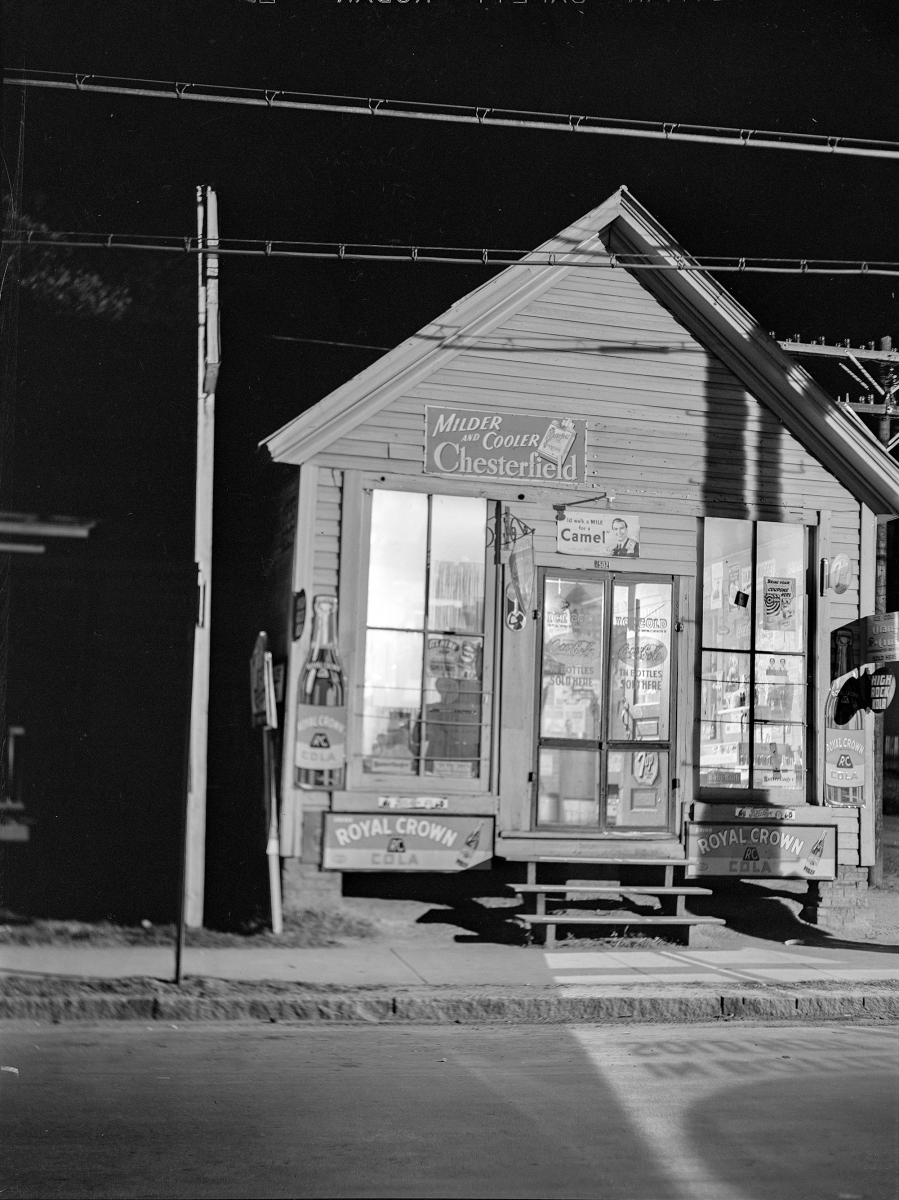
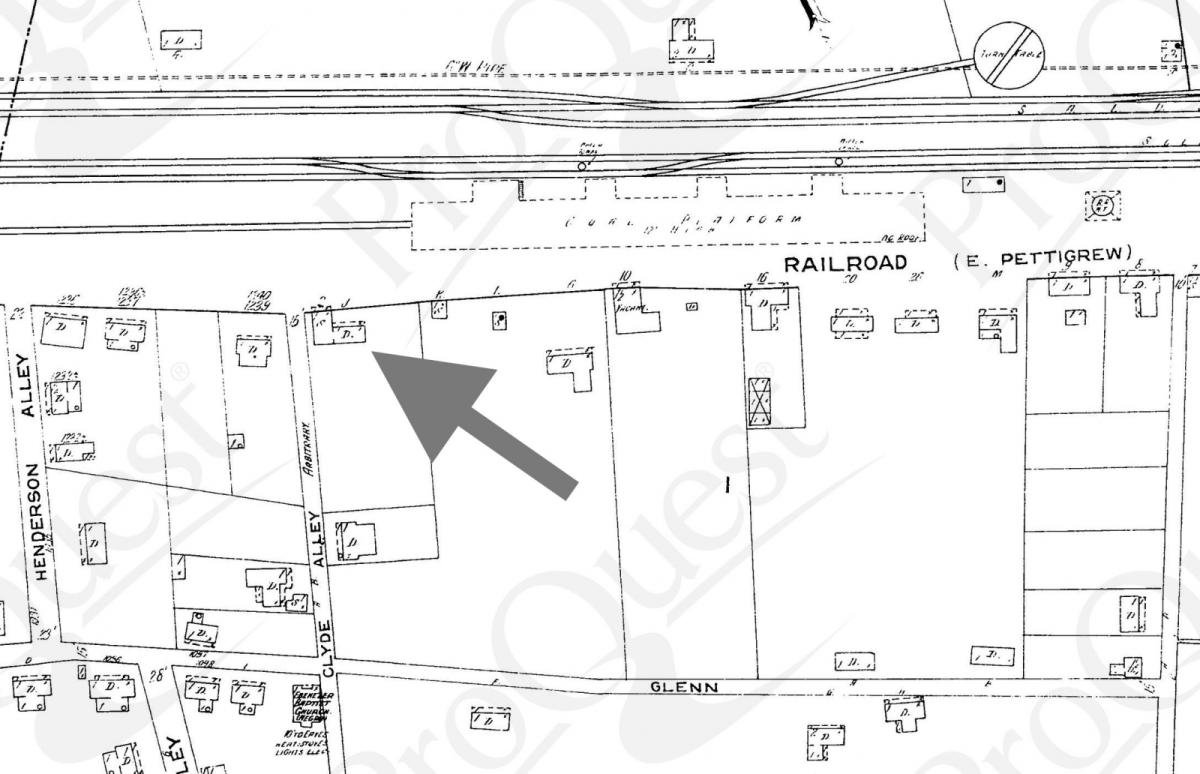
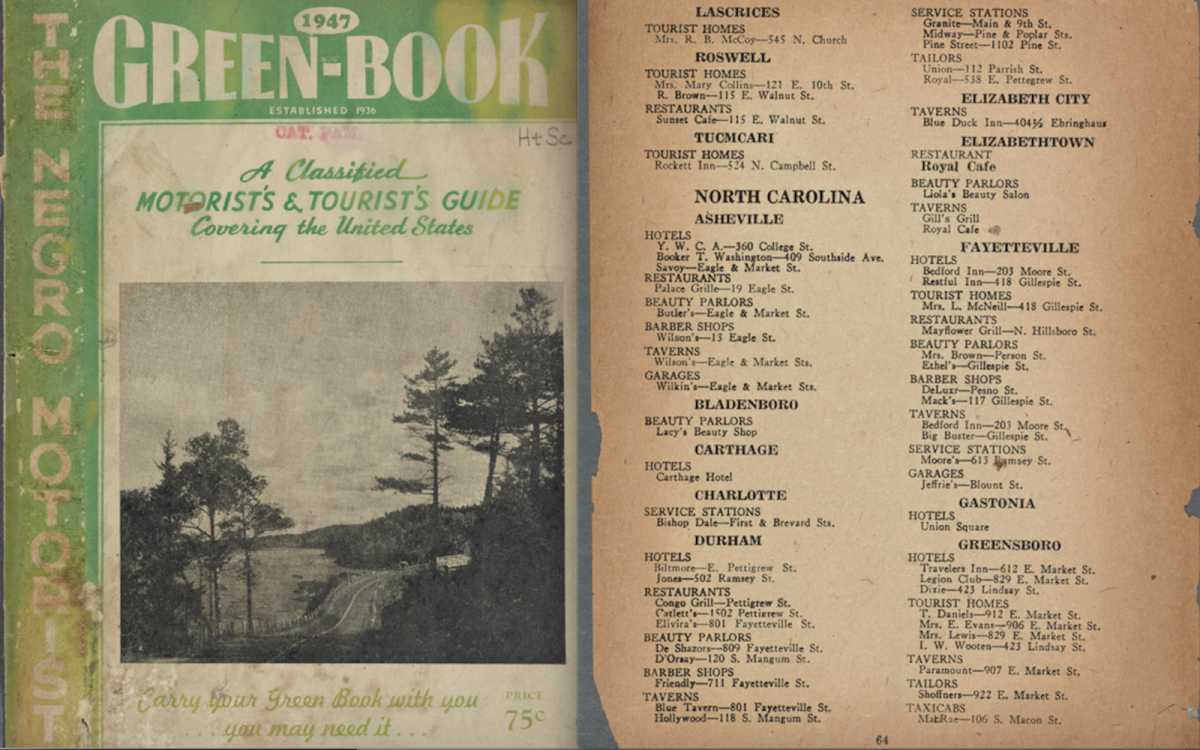
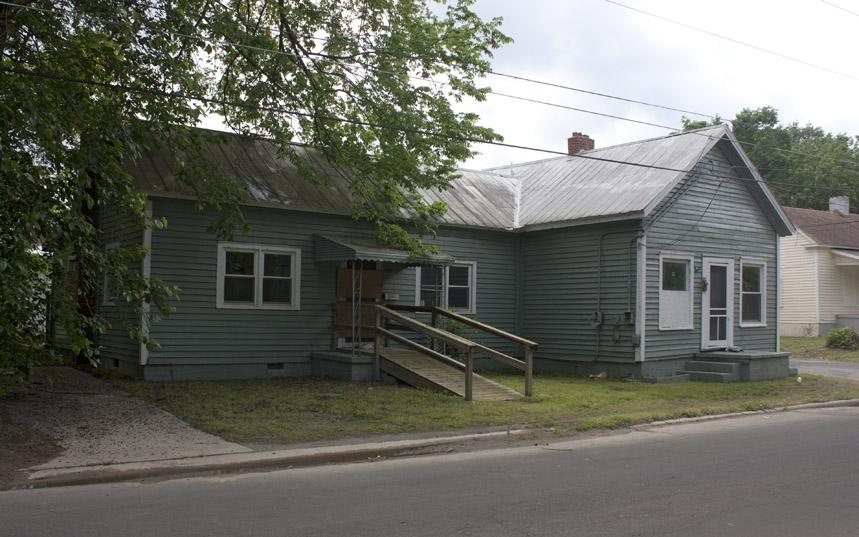
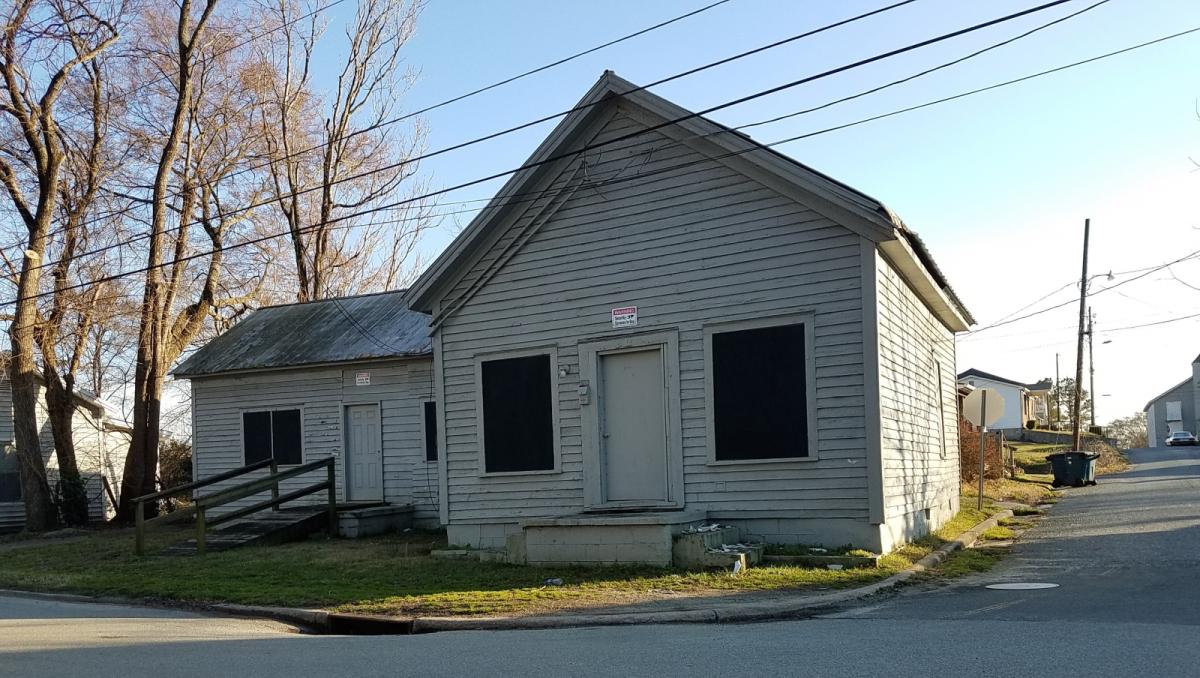
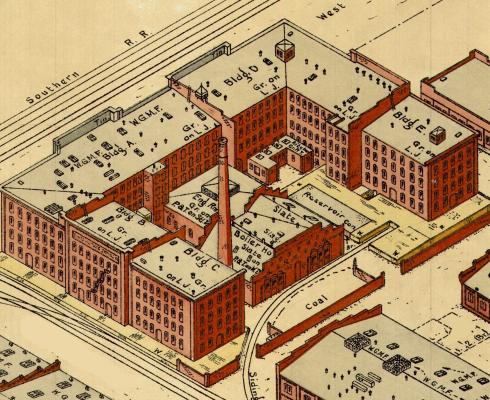
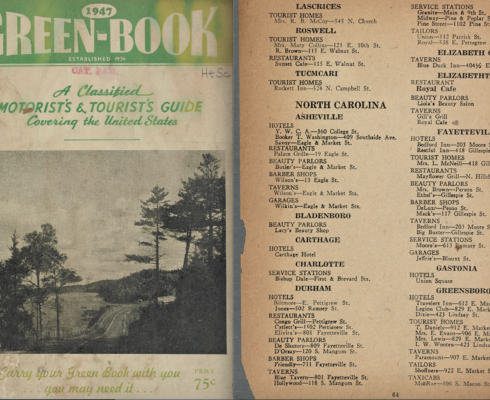
Comments
Submitted by Keith Bowden on Thu, 3/7/2019 - 4:52pm
Wow, fascinating information! I've passed this building recently on morning runs through East Durham and wondered about its history. I had no idea it has such an interesting story. Thanks for solving the Mystery Photo and sharing!
Add new comment
Log in or register to post comments.